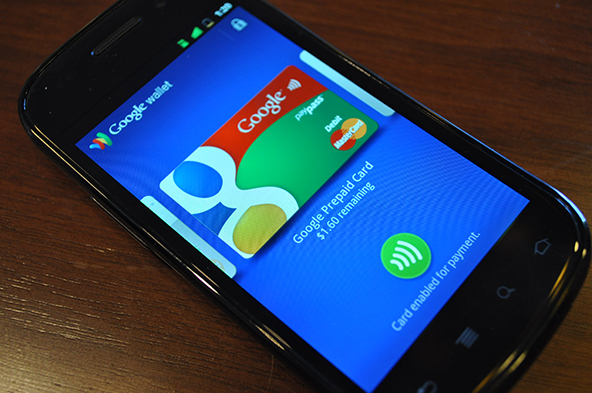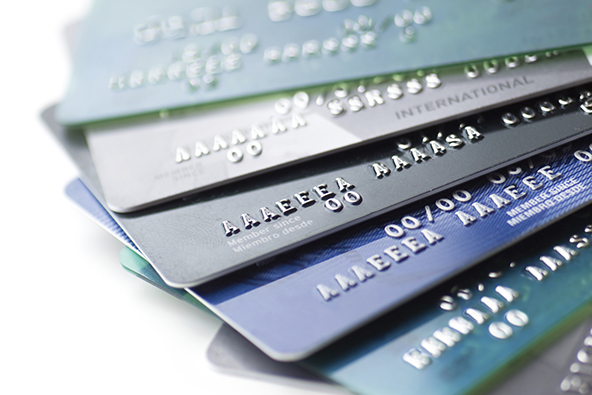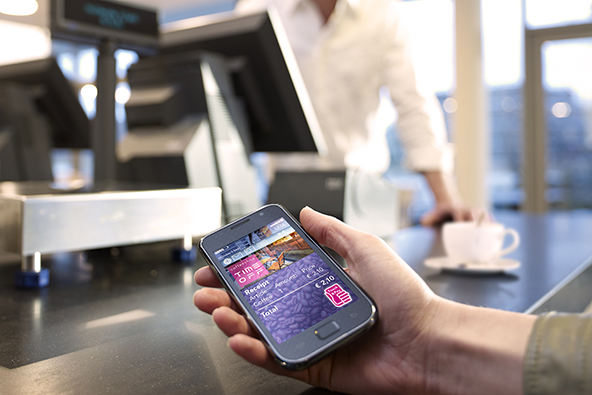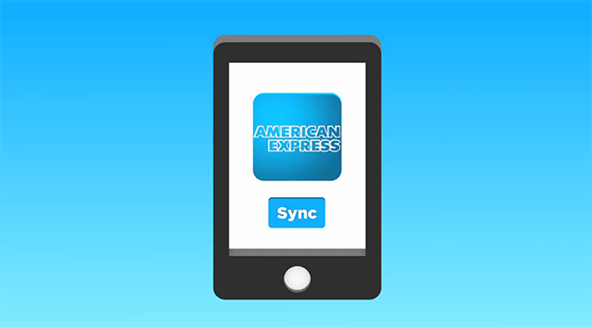Payment Security, Ease of Use and Google Wallet

The payment landscape is changing before our eyes. Mobile payments are the new big thing and everyone who is someone in the payment card industry, and even more newcomers, are battling one another for the early lead. However, mobile payments come in many shapes and forms and some of them have been quicker to win over consumers than others. Phone-based credit card acceptance, for example, spread like wild fire once Square made it possible less than two years ago. Carrier billing, the type of thing companies like BOKU are doing, has also been quite successful, as has been Facebook’s Credit platform. NFC-based payments, on the other hand, have been slower to catch on, even though Google has made a strong push in the field with its digital wallet.
So what are the factors that determine the success or failure of a given payment method? Is it possible to predict whether or not consumers will adopt a particular product in large enough numbers to make it a viable business proposition? Well, a recent Boston Fed paper answers the former question in some detail, which in turn makes it possible to at least attempt to answer the latter. It turns out that there are multiple factors that determine the consumer adoption of a payment product, however their combination differs from one to another, which makes predictions difficult. Let’s take a look at what the Fed researchers found.
Security and Ease of Use among Top Factors in Payment Adoption
Scott Schuh and Joanna Stavins from the Federal Reserve Bank of Boston have looked into nine rather traditional payment methods, including credit, debit and prepaid cards, cash and checking accounts. The researchers have not examined mobile payment data, perhaps because there are none yet available. Still, I suspect that their conclusions will be just as applicable to m-payment methods, as they are to the traditional ones. Here is the gist of the paper:
[S]etup, record keeping, security, and ease of use were the most important factors in consumers’ decision whether or not to adopt payment methods. A significant positive coefficient on security for any payment method indicates that people who see this method as relatively more secure are more likely to adopt it (and conversely — those who see the payment method as relatively less secure are less likely to adopt it). Thus, consumers’ different perceptions of security of providing online information are important determinants of their adoption of bank account number payments and online banking bill payments.
So security is singled out as an especially important factor for the adoption of a given payment method, but it always works in combination with a group of other factors that vary from one product to another:
Credit card adoption was affected by record keeping, ease of use, and control over payment timing. In debit card adoption, most of the characteristics were found to be significant, especially setup and record keeping. In the BAN [bank account number] regression, coefficients on setup and security were most significant and of largest magnitude, but record keeping and cost were also significant. In the OBBP [online banking bill payments] adoption, record keeping and security were found significant. Only acceptance was significant in the prepaid adoption.
But what does that tell us about mobile payments, if anything?
Google Wallet’s Security Woes
Looking at the paper’s findings, one can make a direct link between Google Wallet’s struggles in finding early adopters and its inability to keep its users’ PINs safe from hackers. But, you may say, there were security concerns over Jack Dorsey’s credit card acceptance app when it first went live and competitors did their best to keep the suspicion alive. The difference, however, is that while the security fears with Square have so far been proved to be totally unfounded, they’ve turned out to be all too real with Google Wallet.
Additionally, consumers may not be finding Google Wallet all that easy to use. The thing is that all of us still carry our credit cards and are used to swiping them through the POS machines. It’s fast and simple. With a digital wallet, there are a couple of extra steps involved: we have to sign in, select payment type, connect with the merchant’s terminal and complete the payment. Yes, a digital wallet relieves us of the necessity to carry our cards, but then a small piece of plastic doesn’t weigh a ton.
Square, on the other hand, rather than coming up with a cardless payment solution of its own, took advantage of consumers’ familiarity with the card swipe and its strategy paid off. Of course, raising more than a hundred million dollars to develop and market their product helped, but then Google isn’t exactly skimping on its own m-payment service.
The Takeaway
Perhaps we shouldn’t be too quick to attribute Google Wallet’s lackluster early results to its security and (possibly) ease-of-use shortcomings. There is also the issue of not having enough participating merchants. But the search giant’s executives knew that and had set their expectations accordingly. Yet, their digital wallet still underperformed and the Schuh / Stavins paper indicates the possible causes. If its digital wallet is to be successful, Google will have to prove two points to its customers. Firstly, that it can keep its users’ information safe from hackers and secondly that it is as easy to use as a card swipe.
Image credit: Ekeji.com.



One idea I’ve seen floating around is for Google to allow QR codes to be used in place of NFC where the phone doesn’t support NFC. That would expand the reach of Google’s mobile wallet and could attract people who otherwise may not want to use it.
There is no need to complicate things unnecessarily. There is only a couple of high-end phones and a handful of merchants that support Google Wallet, so how can anyone be surprised for it not taking off.
The other issue with Google Wallet is that it only allows you to use a Citi credit card. If they will want to make this thing work, they should open it up and get other cards supported.
Something you haven’t written about is that Google offers no live customer support for its wallet and that just can’t work with a payment company. When a customer has a problem with a payment, he wants it resolved right away and not wait for someone to respond to an e-ticket.
Google has a mountain to climb, because Verizon, AT&T and T-Mobile can keep blocking it from getting on their subscribers’ phones for as long as they can get away with it. Why would they give them access to their customers when they have their own wallet – Isis – to push on them.
Google will do and spend whatever it takes to get this right, because they feel that they absolutely must do it. They are all about the data and will find a way for their mobile wallet to collect it.
I keep thinking about how easy it was to break Google Wallet’s PIN a couple of months ago. I mean, it took the app these developer guys developed a few seconds to get it. That tells you just how little concern Google has about its customers’ privacy.
But they did fix the issue very quickly, didn’t they. Securing a mobile wallet is not trivial, because you don’t want to ask users to create too complex passwords, because they have to be able to remember them. There are plenty of things to criticize Google for, but this is not one of them.
Google should really stick to search and ads, that’s what they are good at and as far as I can tell they have never been able to make money from anything else.
I agree, everybody used to love Google when all they did was search and we didn’t mind the ads in the search results. It wasn’t until they started doing all kinds of other things to collect ever more user data that people started to take notice.
NFC is not a secure technology for transmitting personal information, plain and simple. I know that a lot of people are touting its “huge potential” but in reality it creates more problems than it claims to be solving. I’m staying away from these “mobile wallets.”
I’ve actually used Google Wallet, unlike most of the others who have commented here and have had no issues at all. I actually liked it and would use it more often if there were more places where it was accepted.
I don’t feel like giving Google even more information about myself than they already have. This is really scary, they want to know everything we do, everywhere we go, everything we buy. I won’t be taking part in this.
I don’t think that this will do the trick for Google. They keep searching (pun intended) for another big revenue stream to go along with the online ads, but so far they’ve only managed to stumble from one disaster to another. And no, the wallet will not be a success.
The only carrier that is willing to work with Google on its mobile wallet, at least so far, is Sprint, which is only the third-biggest one in the US. The only card issuer whose cards can be put in this wallet is Citi, which is out of the top 3 in its category. And the number of stores that accept it is negligible. So how is this thing supposed to be successful.
Google Wallet is actually a good thing. Yes, it did have some security issues to resolve in the early going, but it was the first one to come along, so that should’ve been expected. If we required perfection from every new product or service, nothing could ever be invented.
Anybody that puts their card on google wallet is crazy. I’ve had my care forever. I use google wallet for a few months and my number is stolen and over 1100 dollars was used to purchase merchandise from a website I will not name. It would have been more if the fraud department didn’t catch it. Also when u purchase something and your charge is wrong, google does nothing about it. When a representative from google tells u they.wouldn’t do it. I think they know something.
My bank fraud department!
I don’t think we can get rid of our wallets anytime soon. Even if Google supported all types of credit and debit cards, we still need to put our driver’s license somewhere or some other things we carry in there like… cash. Cash isn’t going away.
Google have a lot of convincing to do if their wallet is to take off. They managed to piss off a lot of people with their privacy shenanigans and dug a deep hole for themselves. Climbing out of it would be a long process.
I would like to have the pros and cons of the ‘Mobile Payment’ with respect to legal compliance and its various features.
Thanking you for your assistance,
regards